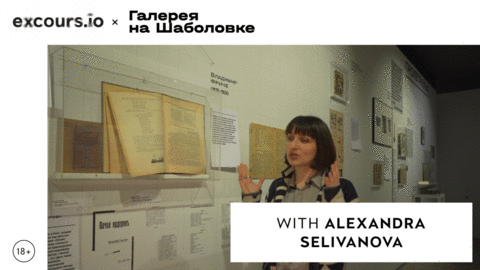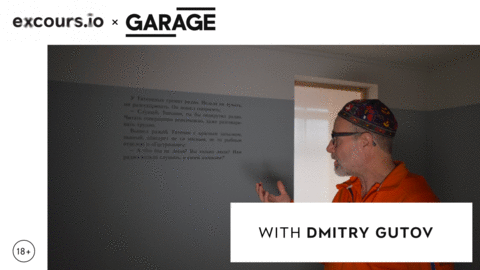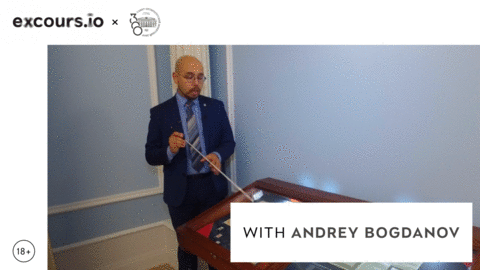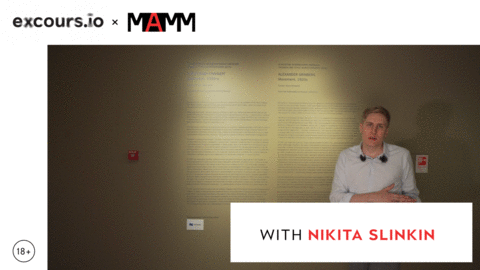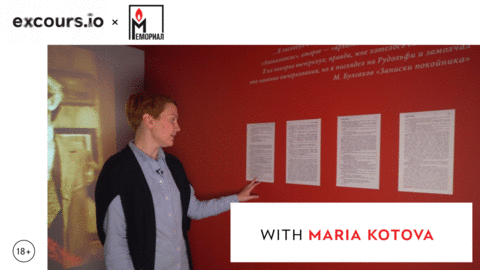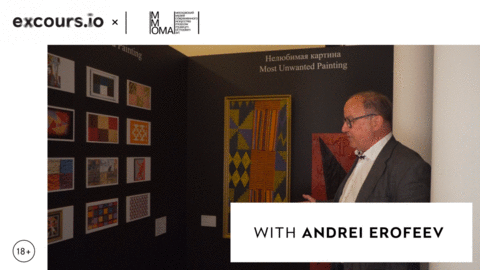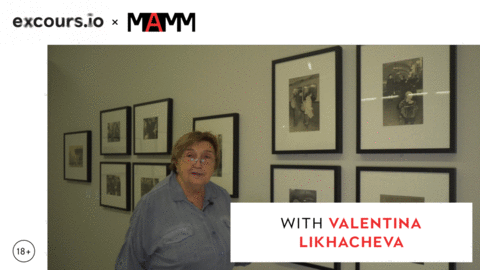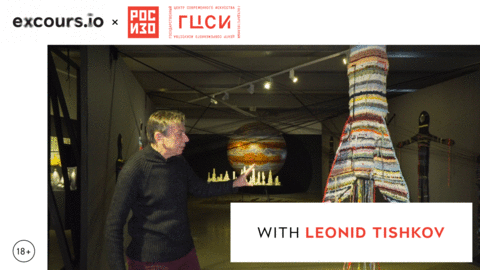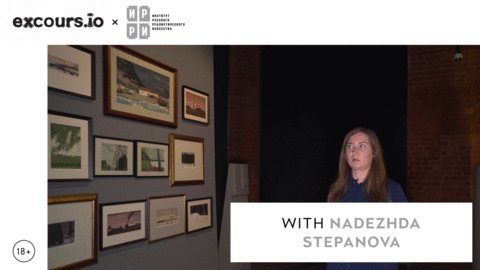GASTEV. How to Work
Why should you watch this?
If our soup can could speak: Mikhail Lifshitz and the Soviet Sixties
The exhibition is dedicated to one of the most enigmatic, mysterious, and controversial philosophers of the USSR and his famous anthology of polemical texts, The Crisis of Ugliness, which criticizes the art of the 20th century. The retrospective showcases never presented before archive documents, Lifshitz’s texts, and artworks in ten interiors, each representing a milestone in the development of modernism or Lifshitz’s thought: 10 rooms – 10 stages of Soviet history – 10 knots in Lifshitz’s biography. The project is the first large-scale analysis attempt of the tense relationship between so-called progressive art and politics in the XX-XXI century.
Why should you watch this?
This exhibition is a must-see for anyone interested in the deep connections between art, politics, and society. Lifshitz’s The Crisis of Ugliness offers a rare Soviet critique of modernism, challenging Cubism and Pop Art in ways that still resonate today. The exhibition’s exploration of these ideas through archival materials, artworks, and Lifshitz’s own writings sheds light on the complex relationship between avant-garde art and political ideology. In a time of global crisis, Lifshitz’s critiques are more relevant than ever, inviting viewers to reconsider the role of art in shaping social consciousness.
From Kerenkа to Sovznak: Money and Revolution
The exhibition invites viewers into the intricate narrative of Russia’s monetary evolution during a time of upheaval. It explores the profound impact of the 1917 revolution on currency, showcasing how money served as both a reflection and catalyst of societal change. Visitors can discover unique artifacts, many on display for the first time, organized into sections such as “Stable Ruble,” “Money and War,” and “The New Economic Policy.” Highlights include the first “Kerensky” notes, designs featuring Marx, and the initial Soviet currency.
Why should you watch this?
This exhibition offers a fascinating glimpse into a pivotal period in Russian history, exploring how currency reflects the societal upheavals of the early 20th century. It presents unique artifacts, many on public display for the first time, showcasing the evolution of money from the stable ruble to revolutionary currencies. Each section meticulously details the impact of World War I and the 1917 revolution on the monetary system, featuring highlights like the iconic “Kerensky” notes and innovative designs for Soviet currency. This exploration not only reveals the artistic and political significance of currency but also connects past struggles with contemporary economic debates, making it a thought-provoking experience for anyone interested in history, art, or economics.
Alexander Grinberg. Movement. 1920s
Step back into the vibrant world of the 1920s with the Movement. 1920s exhibition, which captures the revolutionary spirit and artistic innovation of this transformative decade. Celebrating a surge of creativity across visual arts, architecture, and design, the exhibit showcases how artists challenged traditional norms and embraced new mediums and themes. Through a carefully curated selection of works and engaging installations, visitors can explore the interplay between art, politics, and society during a time marked by upheaval and change. From the bold geometries of constructivism to the experimental forms of avant-garde movements, Movement. 1920s invites audiences to witness how the decade laid the groundwork for contemporary art, illuminating the ongoing dialogue between past and present in the ever-evolving landscape of visual culture.
Why should you watch this?
This exhibition features a diverse array of works that reflect the pulse of a society in transformation — bold colors, experimental forms, and a celebration of motion that captures the zeitgeist of post-war optimism. Each piece invites the viewer to engage with the revolutionary ideas that shaped modern art, making it a must-see for anyone interested in the interplay between culture and creativity. It demonstrates how artists of the 1920s broke boundaries and redefined artistic expression, leaving an indelible mark on the contemporary landscape.
“Heart of a Dog” : Adventures of a Banned Book. A Monstrous Story
The exhibition Heart of a Dog: Adventures of a Banned Book. A Monstrous Story delves into the provocative themes of banned literature, spotlighting the cultural ripples caused by censorship. Through a compelling blend of visual art and literary references, this showcase invites visitors to reflect on the power of words and the resilience of artistic expression. By intertwining the narrative of Mikhail Bulgakov’s infamous novella with contemporary artistic interpretations, the exhibition not only celebrates the defiance against oppression but also fosters a dialogue on freedom and creativity in our modern world.
Why should you watch this?
This exhibition boldly confronts the legacy of censorship through Mikhail Bulgakov’s iconic novella. This engaging showcase interweaves contemporary artistic interpretations with the rich narrative of a story that has faced bans and challenges throughout history. Visitors will be invited to reflect on the resilience of creativity and the vital role of free expression in society. By exploring the intersection of literature and visual art, this exhibition not only honors those who defy oppression but also ignites crucial conversations about the boundaries of artistic freedom today.
KOMAR & MELAMID
KOMAR & MELAMID delves into the fusion of art and ideology, spotlighting the pioneering duo known for their satirical takes on Soviet culture. This exhibition showcases their innovative approach to ‘Sots Art,’ a movement that critiques the socialist aesthetic while playfully engaging with the political and commercial landscapes of the 20th century. Through a diverse array of works, including paintings, installations, and conceptual pieces, Komar and Melamid invite viewers to reconsider the purpose and function of art in society. Their collaboration challenges traditional boundaries, marrying humor with profound sociopolitical commentary—a must-see for anyone interested in contemporary art’s dialogue with history and culture.
Why should you watch this?
This exhibition represents the place where art meets incisive commentary on society and culture. This dynamic duo takes you on a journey through the playful yet poignant realm of Sots Art, characterized by a mix of humor and critique. Their works challenges normative ideals and question the role of art under Soviet influence, making it both a historical exploration and a contemporary dialogue. By engaging with their art, you’ll uncover layers of meaning about ideological constructs, consumerism, and identity. It’s a unique opportunity to reflect on how these themes continue to resonate today. Experience firsthand how Komar and Melamid’s innovative spirit invites a critical look at the world around us — ensuring you walk away with new insights and a deeper appreciation for the complexities of art.
Mikhail Grachev. Soviet Daily Life. 1930s—1960s
In Mikhail Grachev. Soviet Daily Life. 1930s—1960s through an array of photographs, artifacts, and multimedia installations, attendees are invited to experience the complexities of everyday existence during a transformative era in Russian history. The exhibition captures the interplay of culture, politics, and personal narratives, reflecting how art and design were interwoven into the fabric of daily routines — from the bustling streets to communal celebrations. By showcasing both the mundane and the extraordinary, the exhibition offers a unique lens on how people lived, worked, and dreamt in a time of significant socio-political change, encouraging visitors to ponder the lasting impact of this period on contemporary society and culture.
Why should you watch this?
Within this exhibition you can immerse yourself in a pivotal chapter of history at this thought-provoking exhibition that brings to life Soviet daily life from the 1930s to the 1960s. Explore a rich collection that reveals the nuances of everyday existence during an era marked by both creative expression and political upheaval. From candid photographs to everyday objects, the showcase highlights the resilience and spirit of individuals navigating a complex social landscape. Beyond mere nostalgia, this exhibition invites you to reflect on how art shaped identity and community, providing timeless lessons on the interplay between personal life and broader societal movements.
Augury of Cosmos
The exhibition Augury of Cosmos showcases the innovative works of contemporary artists, who masterfully blend traditional techniques with modern themes to explore the complexities of human experience. Through a diverse array of mediums, including painting and installation, viewers engage with the interplay of memory, identity, and the passage of time. Thought-provoking pieces challenge conventional narratives, encouraging a dialogue between the past and present. This exhibition not only highlights unique artistic vision but also serves as a reflection on the broader cultural landscape, making it a must-see for anyone interested in the evolution of contemporary art.
Why should you watch this?
Step into the transformative world of contemporary art at the exhibition Augury of Cosmos, showcasing the extraordinary work of artist Mikhail Slogunov. This immersive event delves into the intricate relationship between identity, memory, and the myriad forces that shape our perceptions of self and otherness. Slogunov’s evocative pieces challenge viewers to confront societal norms and personal biases, making it not just an exhibition, but a profound exploration of the human experience. With a diverse array of multimedia installations, the show encourages dialogue and introspection, inviting you to engage deeply with art that resonates on both emotional and intellectual levels.
Nissky. Horizon
Nissky. Horizon is a compelling exhibition at the Institute of Russian Realistic Art that explores the intricate relationship between contemporary art and traditional Russian realism. Featuring a diverse array of artists, the exhibition invites viewers to engage with works that reflect on cultural heritage while pushing artistic boundaries. Each piece serves as a dialogue between past and present, showcasing how contemporary creators reinterpret classical themes and techniques. This fusion not only honors the legacy of Russian art but also challenges perceptions, encouraging a deeper understanding of identity and artistic expression in today’s globalized context. Through thought-provoking installations and evocative imagery, Nissky. Horizon celebrates the enduring relevance of realism in contemporary discourse.
Why should you watch this?
This exhibition invites you to explore the intricate interplay between tradition and innovation in contemporary art. This showcase features a diverse array of works that challenge conventional narratives, offering fresh perspectives on cultural identity and artistic expression. By engaging with both established and emerging artists, the exhibition creates a dialogue that resonates with today’s societal themes. Don’t miss this opportunity to witness how contemporary art reflects and reframes our understanding of the world — each piece serves as a unique lens through which to view the complexities of modern life. Immerse yourself in this vibrant exploration and discover the transformative power of art.

